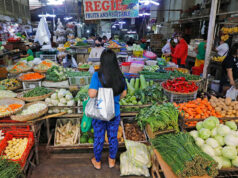IRRI calls for gov’t preparations amid monitoring of El Niño
Los Baños, Laguna — The International Rice Research Institute (IRRI) called for preparations against the threat of the El Niño weather phenomenon as being currently monitored by the state weather bureau.
Weather bureau Philippine Atmospheric Geographical and Astronomical Services Administration (PAGASA) said it is currently on its El Niño watch.
Asked when El Niño could hit the country, Ana Liza Solis, officer-in-charge of PAGASA’s climate monitoring and prediction section, said via text, “Short lived weak El Niño could last for five, overlapping three months. As of now, around 80% chance to develop El Niño by end of January to February 2019. If this (does) not happen, it will not sustain a fully developed El Niño. El Niño or not, as of December 2018, nine provinces in Mindanao experienced dry spell while Ilocos Norte (had a) drought.”
“With the passage of LPA or depression this weekend in Mindanao, some may recover from dry spell.”
Sudhir Yadav, senior scientist for IRRI Water Management, said that it is necessary to think that in the future, there will be many climate change events, and not just prepare for a one-time incident.
“We prepare for the future. One of our big programs is thinking about…the future. There will be many of this type of event, there will be drought and flood.”
“One of the challenges of climate change is (that) these extreme weather events are likely to get even more severe in the future,” IRRI director-general Matthew Morell, for his part, told reporters at the IRRI headquarters here during the visit of Sri Lanka President Maithripala Sirisena.
“This El Niño won’t be the last. It would be a continuous cycle of weather events that we need to be prepared to address,” Mr. Morell added.
He said rice crops should withstand challenges of climate change such as drought and flooding. But he pointed out too that the Philippines has different rice varieties which are drought and flood resilient and which IRRI is also developing.
“We also work closely with partners here in the Philippines about rice production systems, about what to use…We also work closely with the government in predicting rice production using remote sensing satellite,” Mr. Morell said.
Mr. Sirisena was at IRRI to sign a five-year work plan with IRRI to help Sri Lanka sustain rice sufficiency and export more rice, in accordance with the New Sri Lanka National Plan for the Rice Sector. — Reicelene Joy N. Ignacio



